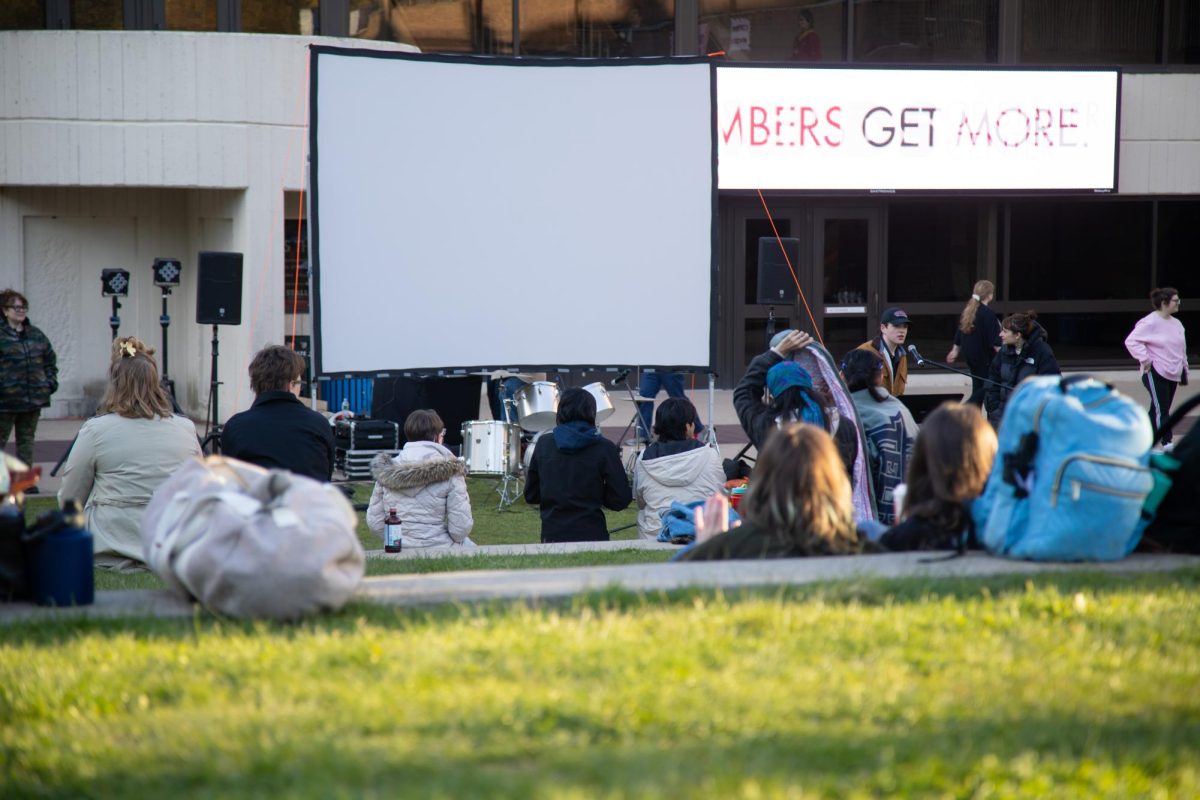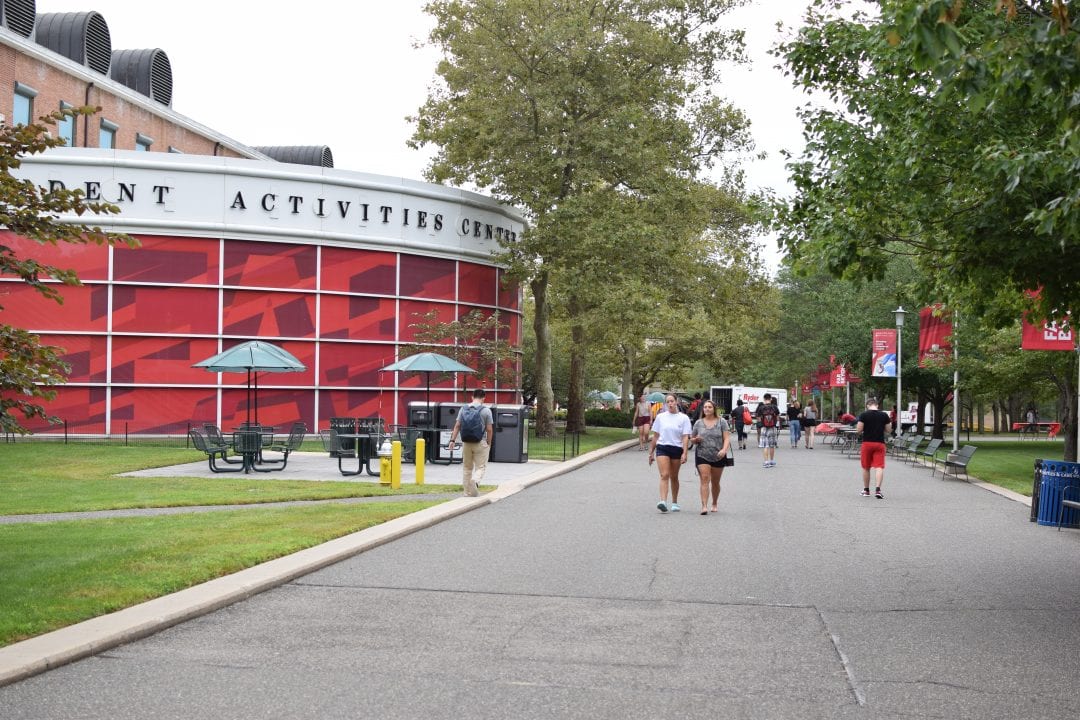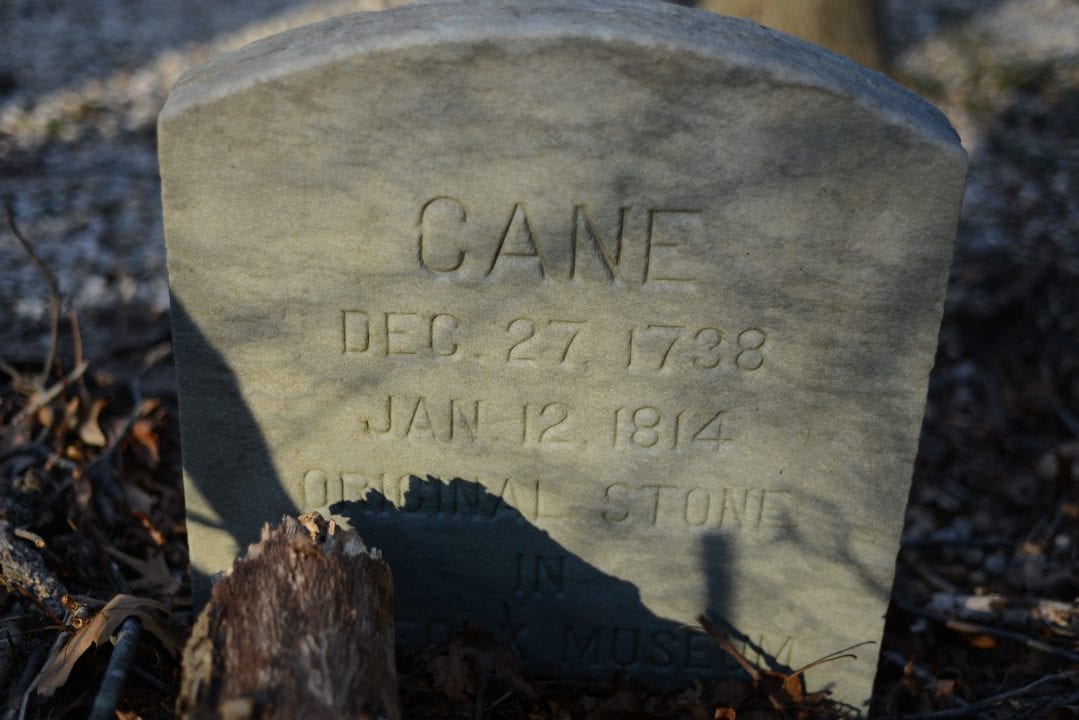
On Wednesday, March 26, Dr. Michio Kaku captured the minds of all 1,000+ students who attended his lecture at the Staller Center. Dr. Kaku is a highly renowned theoretical physicist, teacher and promoter of science. He is the co-founder of string field theory. Additionally, Kaku is one of the scientists working closely to complete Einstein’s final unfinished work—the Unified Field Theory.
Dr. Kaku discussed concepts from his latest book “Physics of the Mind,” touching upon the future of areas like telekinesis and telepathy in our daily lives, implementation of brain pacemakers to record memories for Alzheimer’s patients and the overall importance of understanding the inner workings of the brain.
His presentation alternated between keeping the audience laughing at his plethora of quips and intrigued as he explained the latest applications found in modern physics. When the lecture was over, students were able to ask questions, which Dr. Kaku answered in detail. Hundreds of students waited on line to meet him and ask him to sign tickets or copies of his book.
Before the lecture, members of the student media were invited to speak with Dr. Kaku to pick his brain about science, his accomplishments and his work. Below is the interview.
S: The Statesman
I: The Independent
P: The Press
SBN: SB News
MK: Dr. Michio Kaku
I: Why did you decide to come speak at Stony Brook, having taught – still teaching – at the prestigious CUNY? Do you expect to get something different from our audience?
MK: Well, I like to speak at campuses around the world, and I like to interact with young people, because young people—they are the future. SUNY, of course, is a sister institution of CUNY, and we’re all paid for by the same organization, the state of New York, and a little bit of money from the city of New York, so we’re like twin institutions. Plus, some of the papers that I’ve written in the past were written with professors at Stony Brook. Some of my papers are very widely footnoted, and if you look at something called “superconformal gravity,” it was created by myself and two physicists here at Stony Brook, so I have a strong relationship with the physics department here. But basically, I’ll go where people invite me because I want to try to excite young people to go into science. Science is the engine of prosperity, and we can’t create enough scientists, I think. To keep America prosperous and healthy and alive, we have to have more scientists and we have to have more engagement of young people. For example, we have one of the worst science educational systems in science known to science. It’s awful. Our high school kids scored dead last among the other industrialized nations. Our students scored a little bit above the students of Jordan in many math and science exams. That’s not sustainable. You cannot sustain a scientific establishment when we have one of the worst educational systems known to science, in high school. College, of course, makes up for it. Our colleges are not bad—they’re top rank—but our high schools are abysmally bad.
P: In your words, what is the value of science communicators with a level of celebrity, like yourself, Bill Nye, Neil DeGrasse Tyson? What do you see your role as?
MK: I’ve interviewed a lot of scientists in my time, and I always ask them: how did it start? What got you on this great voyage? And they always say the same thing. You know, when I was around 10, it was a telescope, a microscope, a visit to the planetarium – something got them going. Because before 10, it’s all mommy and daddy, mommy and daddy. After 10, they want to know, well what’s beyond mommy and daddy? And then they have this existential shock, this epiphany, realizing there’s a whole universe outside mommy and daddy. But then, you need a role model, because it’s not enough for you to simply glamorize about science and astronomy and telescopes and stuff like that. You want to know somebody who’s done it. You want to pattern your life around somebody because the wheel’s been invented. Why reinvent the wheel? The wheel’s already been invented. And how many role models do we have? Very few. Just turn on the television, count how many scientific role models you have. But how many reality stars are there, how many B-grade actors are there, right? And then you begin to realize our role models, that the media gives us, give us a very distorted view of reality.
So at age 10 it starts; we begin to become enamored of science. Then we want to visit planetariums, we want to get a telescope, a microscope, a chemistry kit. Then, we hit 15, and it’s all over. It’s all over. The greatest destroyer of scientists known to science is junior high school. That’s when we lose young scientists left and right by the millions. You know, we’re all born scientists. All of us are born wondering what makes the sun shine, what makes the stars glow, where do we come from, what is the Earth all about. We’re born wondering about these things, until we hit junior high school, and then, it’s crushed out of us. Several things happen in junior high school. One is, of course, role models flip. Instead of seeing scientific role models, in high school there’s a pyramid. A pyramid at the top of which, according to Hollywood movies, are the beautiful people – the cheerleaders, the jocks. Now, I have nothing against cheerleaders, I have nothing against jocks, but once you graduate from high school, no one tells you that that pyramid turns upside down. The pyramid just flips, but no one tells you that. So in junior high school, people get confused. Their role models now become the beautiful people, but hey – you’re born that way. You can’t will yourself to become a beautiful person, while scientist, you can. Scientists by sheer will. You can will yourself to become a scientist, but you cannot will yourself to be a beautiful person. And then, science is made boring. So that’s why we need role models, to cut through all the distractions in junior high school. Junior high school makes science nothing more than memorization, giving names to things.
So let me tell you a story. Richard Feynman, Nobel laureate in physics, tells a story that when he grew up in Long Island, his father took him into the forest and showed him birds. He looked at the coloration, the shape of the beak, the wings, the patterns, feeding habits, everything, and explained to the young Richard Feynman why birds evolved the way they did. He knew everything about birds. One day, a boy comes up to him, and says, ‘Hey Dick, what’s the name of that bird over there?’ He didn’t know. He could tell you everything about that bird, except its name. So, Richard Feynman said, ‘Well, I don’t know.’ And then the boy said, ‘What’s the matter, Dick? You stupid or something?’ And then he realized – he had this epiphany – that most people think science is giving names to birds. That’s what science is, giving names to birds. But we know that science is not about that, science is about principles. A handful of principles that drive the universe. For example, biology. The driving principle behind biology, the organizing principle, is evolution. And you can teach that to a kid. In physics, there are only driving principles; one is relativity, the other is the quantum theory. That’s it; two driving principles to drive all of physics. So, he realized that science is presented as facts, figures, memorization – and that’s not science at all.
That’s why we need role models: to tell people that science could be exciting, you can get a job doing science, you can pursue your dreams, and it’s not about memorizing things, it’s about learning concepts. So whenever I do an interview, I try to summarize my statements by saying ‘What concepts am I promoting?’ Only a handful of concepts drive science, like, for example, the weather. If someone asked me about the weather, I try to sneak into the fact that rain is caused when hot air collides with cold air; Benjamin Franklin figured that out. But when you watch the evening news, you now know that when hot air collides with cold air, that’s when it rains. So a simple principle allows you to decode all of meteorology.
S: You’re known for your role as a theoretical physicist, you’re a popularizer of science, as the title as given, but you’re also a teacher, foremost a lecturer. How would you say your role making science a more popular, more public field interacts with your role of teaching science and making it more open to students?
MK: Well, there used to be a conflict; a conflict between trying to popularize science, trying to become a professor, and also trying to do research. Now Carl Sagan was one of the first to hit that ‘buzzsaw’, and he had some rather negative consequences of that. Even though he was a good scientist, an astronomer and helped with the space program, his name was proposed to be a part of the National Academy of Sciences. The National Academy of Sciences is the most prestigious scientific body in the United States, it advises the US Congress. His name came up, and he got shot down. The mathematicians at Yale said he’s just a ‘mere popularizer.’ The vote was taken, and it was humiliating – he got shot down.
But then, several things happened. First, Stephen Hawking became famous, and he’s a research activist scientist. Second, our supercollider got canceled. That was a huge shock. Our supercollider now lives on as a small, pale version of it called the Large Hadron Collider, outside Geneva, Switzerland. So the Vatican of physics is not the United States. The Vatican of physics is Geneva, Switzerland. If you’re an experiment particle physicist, you have to leave the country; you have to go to Switzerland, because Congress canceled our machine. Why? Well, among other reasons, on the last day of hearings, when Congressmen asked a physicist, ‘Will we find God with your machine? If so, I will vote for it.’ The poor physicist didn’t know what to say, so in front of Congress he said, ‘We will find the Higgs Boson.’ Well, you could hear all the jaws hit the floor; ten billion dollars for another goddamn subatomic particle. The vote was taken, and the machine was canceled, and physics – my area of physics, high-energy physics – was set back one generation. One generation of physicists lost because we couldn’t answer that question, ‘will we find God with your machine?’ Since then, we have rerun that day over and over again in our minds – how would we have answered that question. I would have answered it differently. I would have said, ‘God…this machine will take us as close as humanly possible to His greatest creation – Genesis. This is a Genesis machine; it will recreate one of the most glorious incidences in the history of the universe – its birth.’ Instead, we said ‘Higgs Boson’ and our machine was canceled.
It helps to understand where people are at, rather than where we want them to be. And that’s where we professors make a lot of mistakes. We always assume that our students are at a certain level because we want them to be at that level. We have to actually take students where they actually are, and then work from there. For example, when I teach astronomy, one of the first questions I ask the class is why we have summer. Why do we have winter? Is it because the Earth is too close to the sun, too far from the sun? What is it about the Earth that gives us a summer and a winter? Usually, about one third of the class says that summer is because the earth is closer to the sun and vice versa. And then I ask them, what about Australia? When it’s summertime in New York, it is wintertime in Australia, so it cannot be our distance from the Sun – it has to be the tilt of the Earth. That question was also asked to Harvard freshmen. They too, about a third – Harvard freshmen – got it wrong. So you begin to realize that you have to talk to students as they are, not as you want them to be, even if you have to bore some of them in the process. Trying to engage lots of people, you begin to realize that science education in this country is very bad, but that’s the way it is. We take college students as they really are, rather than the way we want them to be.
SBN: You said a little bit earlier that physics in this country was set back a whole generation – did that play a role in your formulation of what the future’s going to be like? Could the time frame have changed?
MK: Well, not really, because the way I predict the future is, I cheat. I get a television camera, from BBC, Science Channel, Discovery Channel and interview the people who are inventing the future. So when they say that in 10 years, this is going to hit the marketplace, this is going to change everything, I know it’s going to happen because I see the prototypes. As a physicist I know who the crackpots are, I also know who the good guys are, and so I make all these predictions based on what I actually see in the laboratory.
For example, back in the mid ‘90s, I wrote a book called “Visions,” where I said that we’re going to have the internet in our glasses, and we’re going to have personalized gene sequencing. You can imagine the shock in the scientific community; there were scientists saying ‘you’re crazy, we’re never going to have the internet in our glasses – we barely have them on our PCs. The internet in our glasses? That’s ridiculous! And personalized genomes? That costs billions of dollars to sequence just one human genome!’ But you see, I talked to the people doing it. I talked to the people who are automating the genomic process, I talked to the people who had blueprints of what glasses would look like if they had the internet in them. Sure enough, now personalized genomes cost $1000 and you can have all your genes on a disk. I had my genes sequenced for example. And Google is coming out with Google Glass sometime later this year commercially. So the way I predict the future is by cheating – by actually talking to the scientists who actually are the ones making this discovery. That’s why I know that I’m not just making things up, I’m not talking about flying cars and jet packs – I’m talking about prototypes, real prototypes in the laboratory that you can see, and these are the predictions that get in my book.
SBN: So do people come to you with predictions or do you seek them out actively?
MK: Actually, I seek them out; I’m sort of like a science junkie – I roam the internet and in my own mind I have a time frame of what is possible and what is not possible. For example, some people think that robots are going to take over very soon, they’re going to be smarter than us. Look at the movie “Her” for instance, or the “Terminator” series with Arnold Schwarzenegger. You know, I’ve been to MIT. I’ve seen the robots. I know how pathetic most of them are. And so I know that Hollywood has to sell tickets, so I know that people are going to latch onto these ideas because that’s what Hollywood does – sell tickets. But I also know by visiting the laboratories that we’re decades, decades, away from a machine that could talk like a girl, and actually talk romance like a girl. We can’t even get a robot that even talks like an ordinary high school kid. We can’t even do that yet. And so that’s how I sort of know what’s possible and what’s not possible, by visiting the laboratories and talking to the leaders of these technologies, and then mentally figuring out is it ten years ahead, is it 20 years ahead, is it 50 years ahead? And so far my predictions have been right on the button. You can go back to my early predictions and they’re right on schedule.
SBN: I saw you on TV recently, on the “Daily Show,” speaking about being able to download a calculus chapter into your brain. Then I found it really interesting that you’re working with Alzheimer’s patients in trying to download memories. And how does that even work? I can understand being able to download data, but how do download a memory, something so personal and individualized?
MK: It turns out that it’s easier than we thought. Simple memories, we’ve already done it. If I take a mouse, for example, and I have the mouse trained to sip water, it memorizes that trick. Then I put two electrodes into the hippocampus. The hippocampus is only about that big, and is the gateway to all memories. If you damage the hippocampus, you cannot have long term memories at all. If you saw the movie “50 First Dates” with Drew Barrymore, that was based on a real person who had injury to the hippocampus. He would shake your hand in the morning and then forget, and then shake your hand again, and do it again and again and again for 50 years, because he could not form long term memories. So we know the hippocampus is the gateway to memory, so you put two electrodes. Simply tape record what goes on between these two electrodes, and later the mouse forgets. Then you shoot that same memory back into the hippocampus and first try – it remembers. This was done just last year, for the first time in history we actually recorded a memory and inserted it back in.
It was duplicated at MIT, where they actually put a false memory into a mouse. So if one mouse learns something, you can actually put that memory into another mouse and have it learn something that it never experienced. Next is primates: a monkey eating a banana, for example. We’re going to record that memory with a tape recorder. We don’t even decipher it – we don’t even know what that gibberish is, that message, but we send it back, in gibberish back, and the monkey remembers eating a banana. We haven’t done that yet, but we will. And the next short term goal is a brain pacemaker, so that an Alzheimer’s patient would push a button and remember where they live, remember who they are, remember who their children are. Think of the millions, tens of millions of people that will have Alzheimer’s that will be wandering around, don’t know who they are, don’t know where they live, calling the police, trying to track them down – it’s going to be a nightmare! A simple brain pacemaker could help alleviate that.
Now that’s short term- long term, is of course to upload a vacation that you never had. There’d be a huge demand for that – I mean, why bother to spend millions of dollars vacationing around the world when you can upload these memories? Or maybe the calculus class that you flunked, we’ll want people to have somebody learning these things, record the memory, and insert it back in. Now in the movie “The Matrix,” you become a karate master. That’s a little bit more difficult, because that involves muscle memory. Muscle memory is not really the memory of the muscle, it’s the memory of the brain stem and a little bit of the spinal cord. So in the future, we’re going to have more than just record the hippocampus. That’s how we do it though; we take a shortcut. All memories go through one organ before it gets distributed around the brain. And so that’s how we do it. We record memories, and we don’t even decipher what this gibberish is. We simply tape record it and re-insert it back in. Later, of course, we will decipher it, so then we will be able to manufacture memories. But right now it’s simply recording memories and not manufacturing memories.
SBN: So we’ll eventually all be super-geniuses in the future, be able to download everything there is to know?
MK: Well I talk about super-geniuses in the book. There are many examples of people with injuries who become super mathematical geniuses. One boy had a bullet that went through his head, the left side of his head–temporal lobe–another man bashed his skull into a swimming pool. Both of them became super mathematical geniuses afterwards. After this talk however, do not get a hammer, hit yourself on the head, thinking that you’re going to become a mathematical genius. But it has happened, and we think we know why now, but we’re not positive. We used to think that the brain records, and that’s it. The brain records and the memories degrade with time, every textbook says that; memories are recorded and they degrade.
Now we’ve begun to realize that forgetting is a deliberate process. Forgetting is a very complicated biochemical process. The brain records, and the brain erases. In these people, the brain does not erase. Their base mechanism is broken. So we too, can have that same ability. These people, you ask them what did you do 20 years ago on May 3 at four in the afternoon, and they will tell you what they were doing at four in the afternoon. One woman said it’s like split vision, one vision is what she sees around her, and the other vision is what she did 30 years ago, on a certain afternoon. She literally relives that whole day, second by second. And for her it’s annoying–she wishes she didn’t have it actually; it gets in the way. And that’s why we probably erase these memories, because it does get in the way.
SBN: What do you think it is that deciphers what gets erased and what doesn’t get erased?
MK: Well we think that emotions have something to do with it. When the amygdala is active, when certain memories take place, we realize that these memories are accentuated. And if you think about it, memories associated with fright, anger, shock, awe – those are the kind of memories that stay with you, not the memories of being bored at a ballet and falling asleep, but the memories of something emotional. And so that’s how we think the brain sort of sorts things through its memory bank, by looking at memories that have an association with an emotion. And emotions in turn are automatic, we have no control over them. They are basically done by the limbic system of the brain.
I: During the Vietnam War, you completed your basic training at Fort Benning in Georgia. Could you talk about what it was like as a young guy, aspiring to one day be Michio Kaku, who could be deployed to Vietnam at any time?
MK: Well that was a turning point in my life-I had several turning points in my life. The first was when I was eight years old; everyone was talking about the fact that a great scientist had died, but could not finish his greatest work. For me, this was huge. What couldn’t this great scientist finish in his lifetime? They published a picture of his desk, with the unfinished manuscript, and they said this is the unfinished work of the greatest scientist of our time. So I said, why not finish it? Why not finish this work? Well, that man was Albert Einstein. That book was unified field theory. And today, we think we can do it. It’s not in its final form, but we think string theory is it. So I was very single-minded to become a physicist.
But then, the army wanted me, because there was a war going on. I was very narrow-minded, very focused on trying to complete Einstein’s dream, but people were dying. I still remember that Life magazine, with no commentary, published the faces of 500 GIs who died that week. About 500 GIs were dying per week in Vietnam. And they just published the faces of all the ones who died, with no commentary at all. That was the war: it was the Tet Offensive, GIs were dying and Uncle Sam needed cannon fodder–people to die on the battlefield. So I had to make some very big decisions, decisions that normal kids never have to make, but I had to make these life and death decisions about what I wanted to do and how I wanted to use my skills.
At first I thought let me build with the Signal Corps, but the army didn’t want Signal Corps people. They wanted infantry. That’s where the need was. 500 per week were dying: they didn’t’ need Signal Corps, they didn’t need radio men, they didn’t need artillery or armor–they needed infantry. That to me helped me focus my priorities, so then I began to realize I had to decide what I wanted to do with myself given the fact that I may not survive. As it turned out, in my high school several people, some of my high school friends died in Vietnam. So I went to Fort Benning in Georgia, to boot camp, and being a physicist I could do a lot of calculations to keep my mind going. When people put mortars into the mortar tube and fired rockets into the air, I could calculate how many seconds it went into the air, then calculate the velocity and the height that it went, just as a mental thing to keep my mind active.
Then I began to realize, wait a minute–there was a village on the other end of this mortar that just got blown up. I began to realize that white phosphorous was being used quite frequently in Vietnam. White phosphorous is very pretty, but when it lands on your hand, it doesn’t stop. It burrows right through your flesh till it comes out the other end. That’s white phosphorous, and we were shooting white phosphorous all over Vietnam. And then I began to realize – war has consequences. This is not fun and games anymore. It’s not just me shooting mortars in the sky and calculating how fast it went and how high up it went and things like that.
Then, by ’69, ’70, the war was beginning to wind down, and then my doctor found that I had too much sugar in my blood – I said, why didn’t you find that before? So I wrote a letter to my draft board saying that I’m ‘not fit’ to be part of the infantry because there’s too much sugar in my blood, I’m borderline, not really diabetic. All of a sudden, it was as if a voice up there said, ‘I’m going to give you back your life. You were destined to die on some unnamed hill in Vietnam; unsung, just buried in mud, forgotten by everybody. That was your destiny.’ But something happened; somebody up there changed their mind. Now of course, I don’t believe in spirits, but I felt like that all of a sudden I had my life back, all of a sudden I could do what I wanted to do. After that, I realized that we have an obligation, an obligation to society. We have to give back as much, more than we got from society.
So I learned a lot from being in the army. One thing is that nothing really bothers me anymore. When people complain that it’s too hot, too cold, you’re late, what’s wrong – things don’t bother me anymore because I had to face death. I had to say to myself, do I want to die for this. And these little things don’t bother me anymore. That’s one thing. And the other thing is that you really do have an obligation to society, that if you don’t’ like something – change it. I began to realize that if I’m just Joe Blow in the street saying that I want social change, who’s going to listen to you? If you have a PhD, if you’re a professor, more people will listen to you. And so then I realized that even though at one point, I thought a PhD is kind of useless, society does treasure professors and their thoughts so why don’t I become a professor and determine my own destiny. Rather than allowing my destiny to be determined by unnamed people in Washington, I’ll determine my own destiny.















Justin • Mar 28, 2014 at 8:04 am
Thank you for the question about Vietnam… I had never heard Dr. Kaku discuss his experience in that area and how it made him not be bothered by little things. And then his comment about thinking a PhD was useless except for clout – I relate so closely to these feelings. Excellent information!